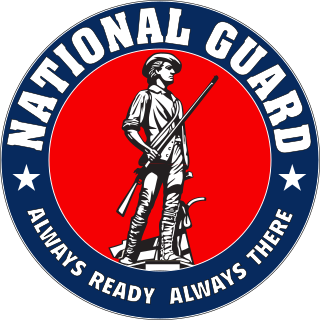
The National Guard is a state-based military force that becomes part of the US military's reserve components of the US Army and the US Air Force when activated for federal missions. It is a military reserve force composed of National Guard military members or units of each state and the territories of Guam, the Virgin Islands, Puerto Rico, and the District of Columbia, for a total of 54 separate organizations. It is officially created under Congress's Article 1 Section 8 ability to "raise and support armies". All members of the National Guard are also members of the organized militia of the United States as defined by 10 U.S.C. § 246. National Guard units are under the dual control of state governments and the federal government.

In the United States, state defense forces (SDFs) are military units that operate under the sole authority of a state government. State defense forces are authorized by state and federal law and are under the command of the governor of each state.
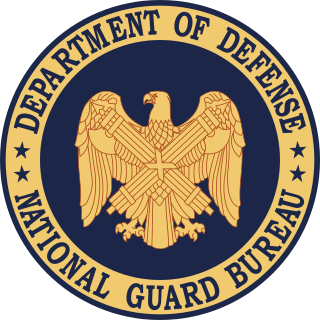
The National Guard Bureau is the federal agency responsible for the administration of the National Guard established by the United States Congress as a joint bureau of the Department of the Army and the Department of the Air Force. It was created by the Militia Act of 1903. The National Defense Authorization Act for Fiscal Year 2008, elevated the National Guard to a joint function of the Department of Defense. The 2007 NDAA, from the previous year, elevated the chief of the National Guard Bureau from a lieutenant general to a four-star general.

The New York State Division of Military and Naval Affairs is responsible for the state's New York Army National Guard, New York Air National Guard, New York Guard and the New York Naval Militia. It is headed by Adjutant General of New York Major General Raymond F. Shields Jr., appointed on October 1, 2018. with the Governor of New York Kathy Hochul serving as Commander in Chief of the state's militia forces. It is part of the New York State Executive Department.

The Ohio National Guard comprises the Ohio Army National Guard and the Ohio Air National Guard. The commander-in-chief of the Ohio Army National Guard is the governor of the U.S. state of Ohio. If the Ohio Army National Guard is called to federal service, then the President of the United States becomes the commander-in-chief. The military commander of all forces in the State of Ohio is the Adjutant General, Major General John C. Harris, Jr. is responsible for the command of 17,000 members, preparedness and readiness, installation management, and budget of the Ohio National Guard. The current Assistant Adjutant General for Army, with responsibility for overseeing the Ohio Army National Guard training and operations, is Brigadier General Thomas E. Moore II. The current Assistant Adjutant General for Air is Major General James R. Camp with responsibility for overseeing the Ohio Air National Guard.
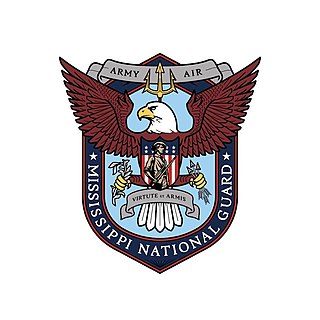
The Mississippi National Guard (MSNG), commonly known as the Mississippi Guard, is both a Mississippi state and a federal government organization, part of the United States National Guard. It is part of the Mississippi Military Department, a state agency of the government of Mississippi. The Adjutant General of Mississippi (TAG), Major General Janson Durr Boyles, serves as the executive director and is subordinate to the Commander-in-Chief, the Governor of Mississippi, in matters relating to the department and the state militia forces.

The Connecticut Military Department is a state agency of the government of Connecticut. Its primary components are the Connecticut Army National Guard, the Connecticut Air National Guard, and four companies of the state militia. The Military Department of the State of Connecticut traces its origins to May 11, 1637, when the "General Courts" established a military arm of the provincial government. In 1939, the State's Military Department was established to consolidate the offices of Adjutant General, Quartermaster General, Armory Board, and Armory Board Inspector.
The Maine Department of Defense, Veterans, and Emergency Management (DVEM) is a government agency in Maine. It comprises the two components of the Maine National Guard, the Maine Army National Guard and the Maine Air National Guard, the Bureau of Veterans' Affairs, the Maine Emergency Management Agency, and when it is active, the Maine State Guard. The Adjutant General of Maine, Brigadier General Doug A. Farnham, commands the Maine National Guard and serves as the State's Commissioner of Defense, Veterans, and Emergency Management (DVEM). The Maine Army and Air National Guard has responded to every call of the State and Nation since before the Revolutionary War. Their soldiers and airmen are trained to high standards and are ready to respond to combat missions, domestic emergencies, counterdrug efforts, reconstruction missions and more.

The Nevada National Guard is the component of the United States National Guard in Nevada. The governor of Nevada may call individuals or units of the Nevada National Guard into state service. The Constitution of the United States charges the National Guard of each state to support its dual federal and state missions.
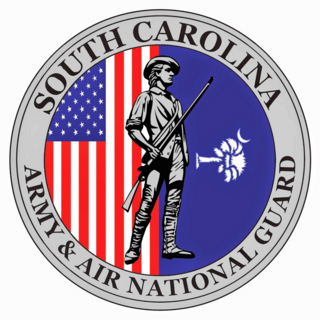
The South Carolina National Guard (SCNG) consists of the South Carolina Army National Guard and the South Carolina Air National Guard.
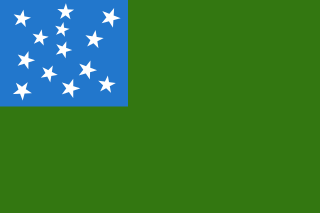
The Vermont National Guard is composed of the Vermont Army National Guard and the Vermont Air National Guard. Together, they are collectively known as the Green Mountain Boys. Both units use the original Revolutionary War-era Flag of the Green Mountain Boys as their banner. In 2009, they had 2,600 members.

The Adjutant General of Oklahoma is the highest-ranking military official in the state of Oklahoma, subordinate only to the Governor of Oklahoma. The highest officer of the Oklahoma National Guard, the Adjutant General is the principal advisor to the Governor on military affairs and the head of the Oklahoma Military Department as the Secretary of the Military.
The Texas Military Forces (TXMF) are the principal instrument through which the Texas Military Department (TMD) executes security policy for Texas, which has the second-largest population and border in the United States, and the 9th-largest economy in the world.

The Massachusetts State Defense Force (MSDF) is the currently inactive state defense force of the Commonwealth of Massachusetts. It was inactivated in 2016 by Governor Charlie Baker. The purpose of the Massachusetts State Defense Force, when active, is to augment the Massachusetts National Guard during emergencies in the state, especially when some or all of the National Guard was deployed. The MSDF is an all-volunteer militia which reported to the State Adjutant General and was under the command of the Governor of Massachusetts. Members met for drills one weekend per month unless activated by the Governor during an emergency. The MSDF was headquartered at Milford, Massachusetts, in the same building as the Massachusetts National Guard. The director of the MSDF was appointed by The Adjutant General of Massachusetts (TAGMA). The Massachusetts State Defense Force is authorized by both the Constitution of Massachusetts and chapter 33 § 10 of the Massachusetts General Laws.

The Oklahoma Military Department is an agency of the state of Oklahoma that serves as the administrative agency for all matters concerning the Oklahoma National Guard. Under the authority and direction of the Governor of Oklahoma as commander-in-chief, the agency is responsible for planning, establishing, and enforcing rules and procedures governing the administration, supply, and training of the Oklahoma National Guard, when not in the active service of the United States, the Oklahoma State Guard and the Oklahoma Unorganized Militia. The Department also maintains all state-owned, licensed or leased facilities, including Camp Gruber.

The New Mexico State Defense Force (NMSDF), formerly the New Mexico State Guard (NMSG), is part of the armed forces of the U.S. state of New Mexico. It is a reserve military force that works parallel to the state's National Guard. Authorized under the constitutions of the United States and New Mexico, the NMSDF is organized as an internal security and emergency services reserve force.

The Adjutant General of Kansas is the highest-ranking military official in the State of Kansas and is subordinate to the Governor of Kansas. The Adjutant General is a member of the Governor's Cabinet and advises the Governor on military and emergency management matters. The Adjutant General runs the day-to-day administration of the Kansas Adjutant General's Department, including the Kansas National Guard.
The Adjutant General of North Carolina is the head of the North Carolina National Guard. The position was created in 1806, when the Militia Acts of 1792 required the state to establish the position to better train the state militia. The office is appointed by the Governor of North Carolina and requires five years prior military service.

The Texas Military Department (TMD) is an executive branch agency of the Texas government. Along with the Texas Department of Public Safety, it is charged with providing the security of Texas, which has the second largest population, border, and economy in the United States. It also provides administration of the Texas Military Forces (TXMF), the principle instrument through which it executes security policy. TXMF currently include the Texas Army National Guard, Texas Air National Guard, and Texas State Guard. It formerly included the Texas Rangers, Texas Army, Texas Navy, and Texas Marines.
The Texas Militia are the militia forces of the State of Texas. It currently consists of the Texas Army National Guard, Texas Air National Guard, and Texas State Guard. It is administered by the Texas Military Department under command of the Texas Adjutant General. Since 1846, the Texas Militia constitutes the entirety of the Texas Military Forces.















